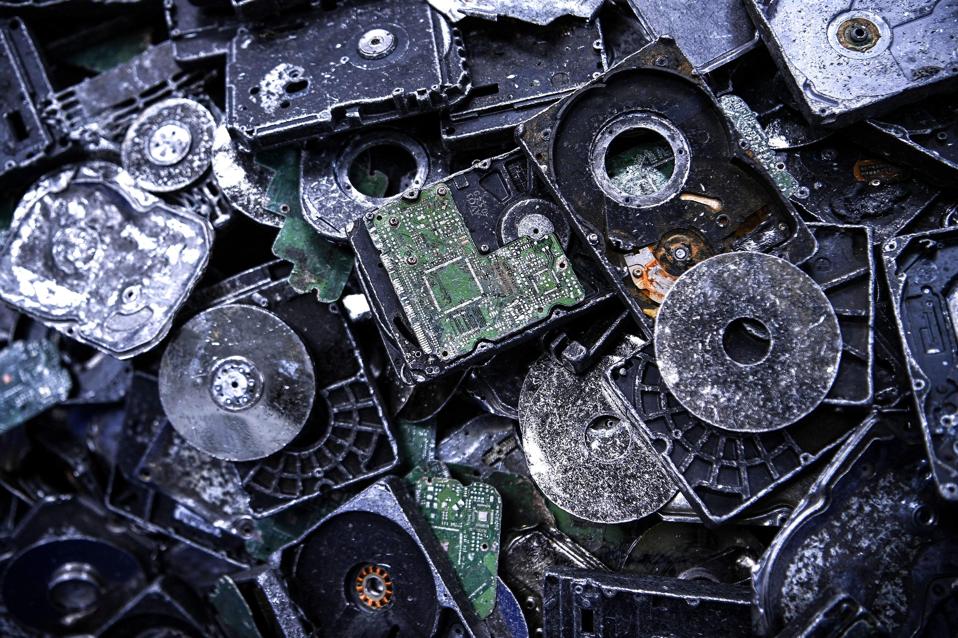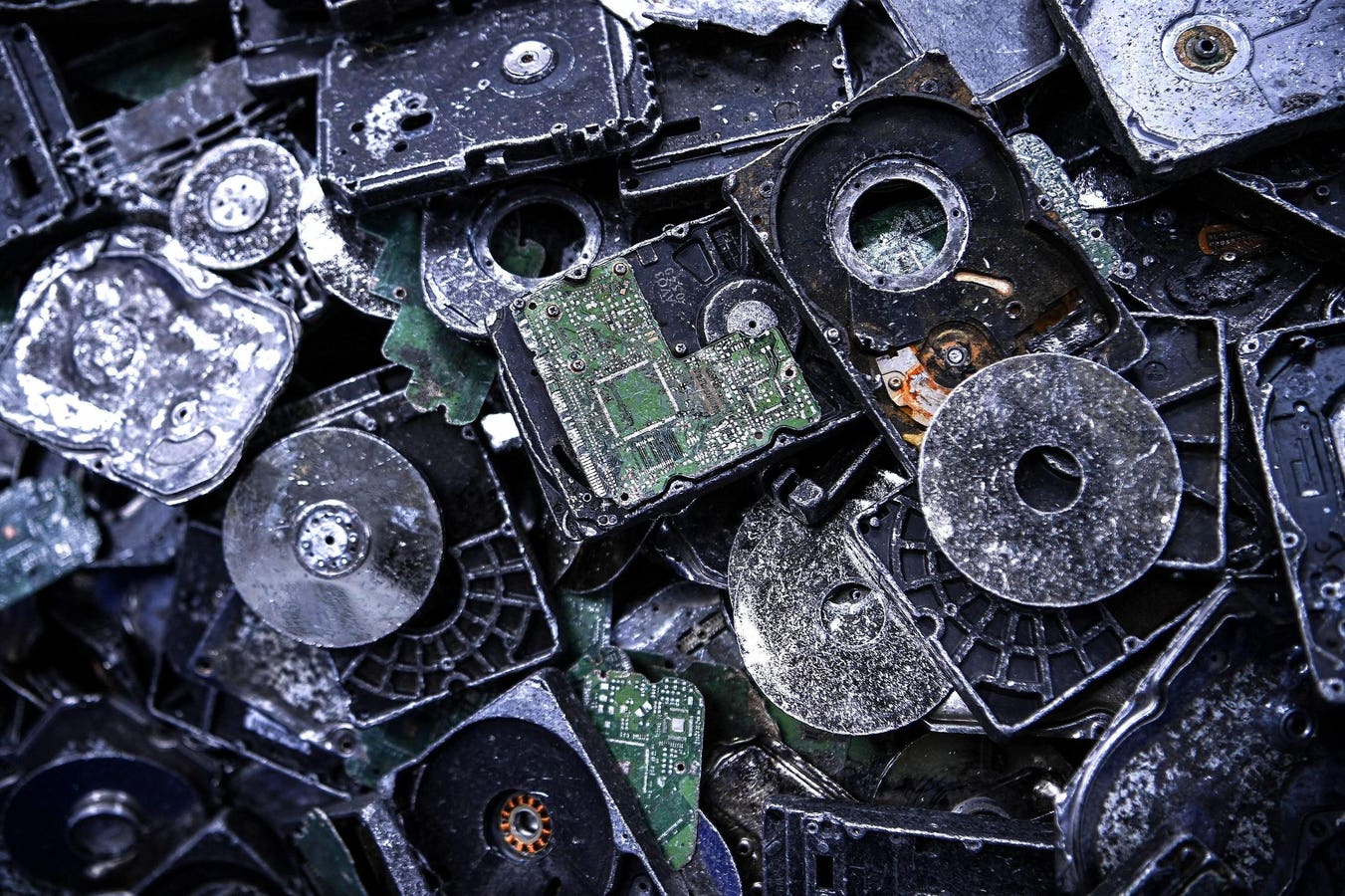
Electronic waste after components containing rare earths were extracted from computer hard disk parts at the Bureau de Recherches Geologiques et Minieres (BRGM) (Geological and Mining Research Office) in Orleans, central France. (Photo by CHRISTOPHE ARCHAMBAULT/AFP via Getty Images)
AFP via Getty Images
The latest chapter in the trade war between China and the United States involves yet another example of weaponization of mineral supplies versus chip technologies. Export “bans” with few exceptions of 17 rare earth minerals (defined in this context within the periodic table as the 15 lanthanide elements plus scandium and yttrium) by China, and curtailment of semiconductor chip sales by the United States are justified by both countries for “national security” reasons. There is a presumed “dual use” of such commodities for both civilian and military purposes. Both countries, who are vying for first place as economic and military powers, raise this as a rationale for restrictions. Yet the level of dependence on each other’s supply for purely defense needs deserves greater scrutiny. For example, the General Accounting office in the United States estimates that the Pentagon’s demand for rare earth minerals is 0.1% of what is needed for civilian uses for the Green Transition.
A review of the various defense applications reveals that the Rare Earth metals which the U.S. military needs and for which there are few alternatives are the following five metals: neodymium, praseodymium, dysprosium, terbium and samarium. These metals are used in the widest array of military uses because of their unique magnetic properties which would include jets, missiles, drones, lasers and a range of propulsion technologies. Alternatives would present tradeoffs that would considerably diminish effectiveness and compromise the level of quality needed in defense applications. The good news is that these five elements are also the ones which are most recyclable from existing stocks for technical reasons. They are often found in modules from which they can be economically extracted. Relatively modest investment in recycling infrastructure could be undertaken at a much faster pace than opening new mines.
Ageing wind turbines that use direct drive technology turbines may be a source of many of these metals. On average, between 400 to 800kg of neodymium iron boron magnets can be found in each of these turbines. There are over 70,000 wind turbines in the United States generating around 10% of the country’s electricity. Energy conservation and diversification to other sources such as solar and the next generation of nuclear power, as well as other magnet options for wind turbine technologies, could make these stocks available for recycling. The U.S. Department of Energy even conducted a competition on recycling technologies for wind turbines which garnered hundreds of entries. Old disk drives and a range of other electronics also have considerable recycling stock for these metals. One recent study indicated that simply having more circular economy strategies such as product-take-back regulations can lead to an increase of 701 kt secondary supply and a decrease of 2,306 kt demand within the next three decades.
When demand forecasts are considered by journalists, there needs to be further ground truthing of the assumptions behind many of these forecasts. As noted by Thea Riofrancos in her recent book about the extraction bonanza for lithium, the difference between best-and worst-case scenarios for lithium demand in 2050 is a staggering 92% The disparity depends on a range of assumptions around recycling, dematerialization, and redesigned transport systems. Similar detailed analysis of the demand for rare earths needs to be carried out with a fine-toothed review of metal stocks in ageing defense infrastructure scattered all over the world in U.S. military bases. The Defense Logistics Agency has a strategic materials program but it needs closer linkage to documenting existing recycling stocks from derelict military hardware on bases.
Conversations on “critical minerals” has become highly securitized with presumptions about defense demands that are in fact quite modest in comparison with broader demands that are likely to be needed for civilian technologies for the Green Transition. With more transparent sharing of data on demand and supply, some of the anxiety that characterizes current debates on “friendshoring” of mineral supply could also be better managed and lower the temperature on trade wars between the United States and China. As a new report by the United Nations International Resource Panel suggests, circular economy strategies must be prioritized otherwise we face the prospect of a $450 billion financing gap for critical minerals. Ultimately, we must strive to find cooperative solutions for the critical minerals challenge.

